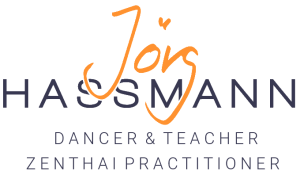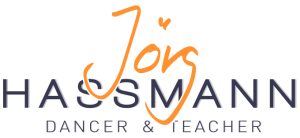Hands-on work – Why does it touch me so much?
A highlight and red thread of a workshop in Warsaw became a very simple hands-on exercise, kind of the most simple version of it: One person is moving, the other one follows with the hands on the movers body without giving any directions. That’s in a way it.
What is the work? The work is mainly to not do many things we usually do.
When I place my hands on a partner I wonder, what it needs to ‘simply be with’ this person, to not try to give something, to not make my partner better, to not impress with my touch, to not guide in any direction and to not hold back. I find it essential to not know the answer what and how this touch exactly is, but to seriously wonder about the question how to simply be with my partner through the touch. There is definitely no perfect quality of touch. Sometimes a very light touch can be great but also a very full and juicy touch can help me to be the most present and listening.
A helpful starting point for me is to purely listen, to look how much information I can receive through my hands in terms of temperature, texture and of course movement in different layers of depths under my hands. With this touch I follow the directions that I find, intending not to add anything extra. I want to follow with my entire body, not just with my hands. That of course is a big question, how to feel my hands connected to my core, my center and the rest of me… (which is another very basic interest in my teaching, but that would need another text.)
Because I don’t know how this ‘being with my partner’ is supposed to work I need to try out, I need to dare to get it wrong. Hesitation kills presence. The question how to get it right is easily misleading anyways. More important is that I am engaged, that I am finding my journey of curiosity. How long can I stay interested in a touch? When do I have the desire to change the position of my hands or the quality of touch? Or when do I change my focus within what I can sense?
This hands-on work is a dialogue. I try everything I can to listen to my partner and to follow what I find, without wilfully changing it. But that is only one part of the dialogue. The moving person needs to let me in. The way my partner moves partly decides if I can follow easily or only under stress (then I better let go off him). But even if my partner physically makes it easy to have my hands on him, I might notice that my touch isn’t really received, that my touch is kind of ignored. My touch matters. My touch is not neutral. I am not a machine but an empathic human being. A touch that is fed by a fully present person is very inspiring and can trigger curiosities. It might enhance a certain focus, but still: the mover stays independent, free to follow his or her own journey of curiosity. But the touch always communicates ‘I am here with you, you are not alone, you are acknowledged in what you do and how you are.’ This kind of touch leaves traces, even if the mover doesn’t work consciously with the body parts that I touch. As the hands-on person I notice changes in my partner, which again gives me inspirations for my hands-on work. A very nurturing dialogue can develop, even if it doesn’t follow the rules of our usual question and answer modality.
We can respond to something that wasn’t wilfully suggested. Both can follow very different curiosities and still interact in a highly responsive way. The logic of communication is less obvious but can be very clear or deep.
In certain aspects it feels similar to what I know from Authentic Movement, where one person is moving freely with eyes closed and the other one is holding the space by watching empathicly with least possible judgment. But with the hands-on I am an even closer witness. On the other hand I limit the freedom of my partner more and I influence him or her more, no matter if I want to or not.
What touches me almost to tears in being followed is that someone gives everything possible to hear me and to let me be how I am – with the feeling of being appreciated. This is an astounding experience, especially in our world where our value depends so much on how good we perform.
The main question for the person that is being followed is, how to let the partner in. How can I invite my partner to be with me. Of course the quality of touch I receive in this role is important and will influence how much I want to let my partner in. I feel that I have quite a range of choice how much I engage. First of all I don’t want to please my partner either. I am not moving in way to impress or to give enough, so that it is interesting to follow me. The base is my own curiosity and I get some extra food through the hands that are on my body. I can use it consciously or I notice ‘just by the way’ how the touch influences me. But every touch is a limitation of movement options. I am more free without touch. Most ways of turning are much easier without being touched, or exploring quick and big movements, sharp changes of direction and quality. The harder I make it for my partner to follow me the less I get from the touch – and I need to know if that is what I want.
As always the three main fear patterns can appear – physically or mentally: Contracting, Collapsing or running away. Getting into a doing mode of too much activity, or hesitating my impulses and hoping for things to be over, or to (often unconsciously) move away from my partner. The nice thing is that those fear responses in this kind of work are usually very subtile. They don’t feel like fear yet. This opens the great chance to explore my habitual ways to respond. Hm, written down it sounds a bit psyco-heavy. But as a practice in a group setting I experienced it as very simple, rather easy to get into, deep and also light.
In an experienced Workshop in Genoa – two weeks after the Poland workshop – I went further with this hands-on work. We explored how this quality of touch can become an easily available ‘point zero’. Often we get stuck in a certain quality within a dance. Sometimes we mange to change to a different quality of touch to open more options. But it can feel like an effort, when there is no real or clear impulse for a specific quality. I felt this non-directional touch is very easily available. It doesn’t need a new idea or a clear intention. It is a very clear un-doing impulse that still embraces movement and aliveness. It is also an easy way in the transitions of in-& out of touch & weight. A tool for changing constellations and opening the contact bubble. It might become a new branch of exploration for me. Let’s see …
A few practical hints:
As a follower it is easier to stay with the hands on the torso. Following the partners arms or legs can be technically very difficult when the partner moves quicker or bigger, so that my touch would limit the other one’s movement possibilities substantially. Being in touch with two hands can give a sense of volume or bring attention to the connection between the touched body parts.
It takes quite some skill to follow with my entire body. In positions with minimal movement it doesn’t seem so necessary but it creates a good base for when my partner starts moving more through levels. In order to stay close to my partner I try to keep my pelvis on a similar level as my partners pelvis.
As the mover any position is possible to start with. Lying on the side can be nice, since one can very effortlessly explore in detail rather complex movements as a dialogue between pelvis and shoulder girdle. Kneeling on the shin-bones with an upright spine also offers a lot of details but gives easier access to movement in space.
For many years I used the following-quality of hands-on work as a base for supporting the movements of my partner or to re-direct them as supportive manipulation. Juha Vitamäki called it honey-pulation. After getting deeper into the quality of ‘just being with the partner’ I strongly feel to not go diectly into a manipulation research. There is something too fragile and delicate established in terms of opening up, so that being directed by someone else feels potentially intrusive. Instead I’d prefer to have a phase of both partners soloing before and after changing roles, while still acknowledging each others presence. From there an open duet can develop wherever it wants to go – and touch and weight might become part of it.

